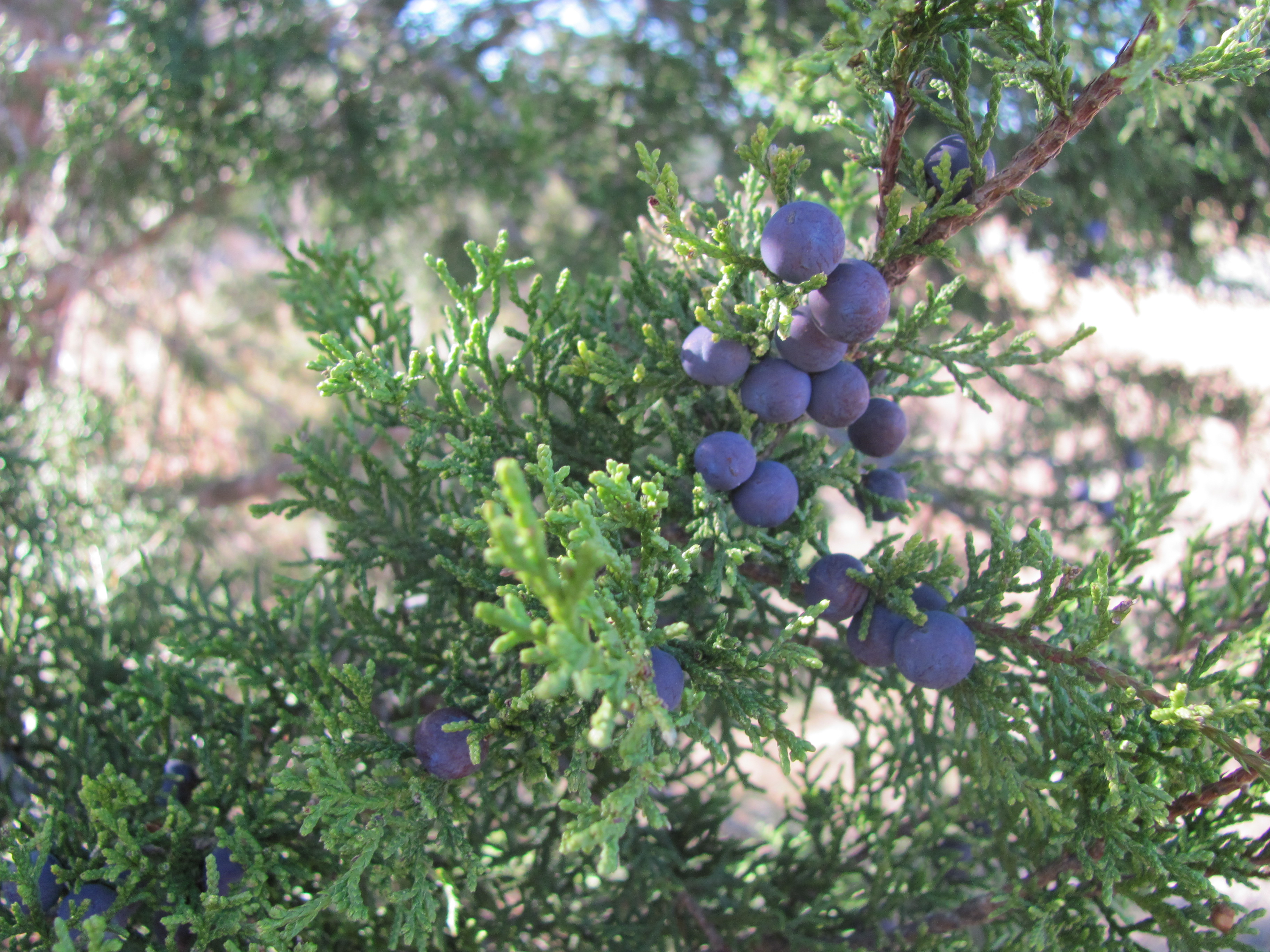Texas cedar
(Juniperus deppeana deppeana)

Description
Juniperus deppeana (alligator juniper or checkerbark juniper; Native American[clarification needed] names include táscate and tláscal) is a small to medium-sized tree reaching 10–15 m (rarely to 25 m) tall. It is native to central and northern Mexico (from Oaxaca northward) and the southwestern United States (Arizona, New Mexico, western Texas). It grows at moderate altitudes of 750–2,700 meters (2,460–8,860 ft) on dry soils.The bark is usually very distinctive, unlike other junipers, hard, dark gray-brown, cracked into small square plates superficially resembling alligator skin; it is however sometimes like other junipers, with stringy vertical fissuring. The shoots are 1-1.5 mm diameter; the leaves are arranged in opposite decussate pairs or whorls of three; the adult leaves are scale-like, 1-2.5 mm long (to 5 mm on lead shoots) and 1-1.5 mm broad. The juvenile leaves (on young seedlings only) are needle-like, 5–10 mm long. The cones are berry-like, 7–15 mm in diameter, green maturing orange-brown with a whitish waxy bloom, and contain 2-6 seeds; they are mature in about 18 months. The male cones are 4–6 mm long, and shed their pollen in spring. It is largely dioecious, producing cones of only one sex on each tree, but occasional trees are monoecious.
Taxonomic tree:







